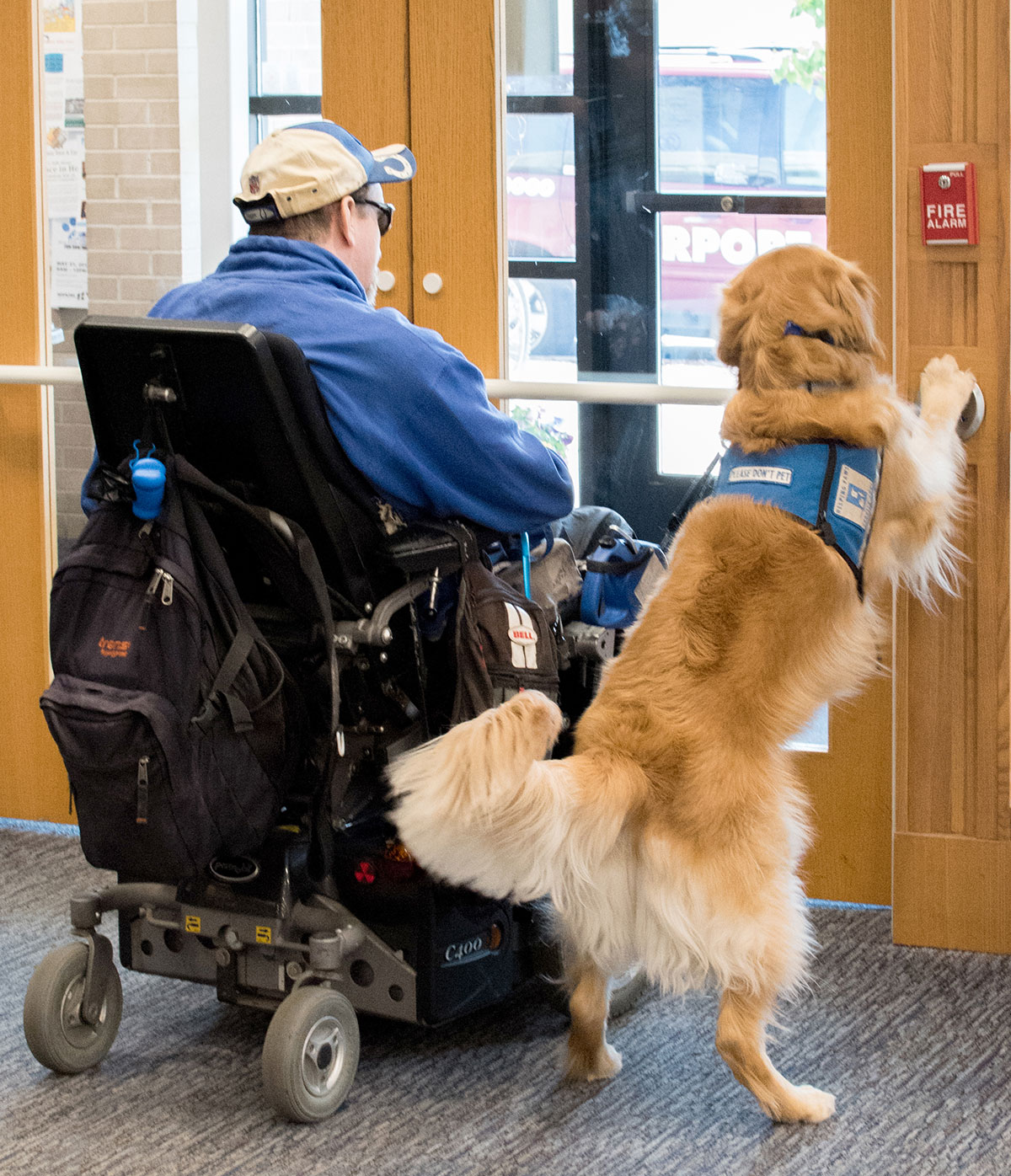FAQ

Currently, Helping Paws trains assistance dogs for people with mobility impairments and veterans with Post Traumatic Stress Disorder (PTSD). At this time we do not train dogs to work with individuals with hearing or vision loss, autism, or medical alerting (seizures, diabetes).
Will Helping Paws help me train or certify my own dog?
No. Due to potential liability issues, we only train and certify dogs that come from within our organization.
Does Helping Paws place dogs with children?
Children 10 years of age and older can inquire about the application process.
How much does it cost to get a service dog through Helping Paws?
We require a nonrefundable application fee of $50 and an equipment fee of $300 at the time of placement.

Our waiting list varies depending on the matching process to join the right dog with the right person. It is not uncommon for that process to take up to two years.
What breeds of dogs does Helping Paws train?
We train Labrador Retrievers and Golden Retrievers.
Would a service dog protect me if someone was trying to hurt me?
Since service dogs interact with the public, they must acquire proper social behavior and be held to the highest standards. This means they cannot demonstrate any aggressive behavior toward people or animals. Many service dogs wear head collars that may be confused with a muzzle. However, head collars do not restrict the dogs’ ability to fully open their mouth. Instead, head collars allow a handler to have greater control using less effort and strength, which is ideal for individuals who have reduced mobility.
